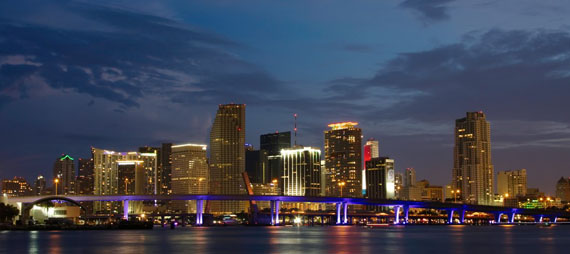Trending
Downtown Miami condo supply can weather looming bear market, experts say

Two months after Miami’s Downtown Development Authority released a report signaling a slowdown in the downtown condo market, its author told The Real Deal that there’s enough buyer demand to keep up with the current inventory of units until the latter part of 2016.
The report notes that 22,200 units are in the pipeline — the equivalent of an 11-year supply under the estimated 2,000 new condo units the Miami market can absorb annually, as reported by TRD columnist Peter Zalewski. Almost half of the 22,000 units are currently under construction or in the preconstruction planning and permitting phase, according to the report.
“With the buildings coming out of the ground now, there is more than adequate demand to finalize and sell those out,” said Anthony M. Graziano, a senior managing director for Integra Realty Services Miami, which produced the report for the DDA. “I don’t project any vacant buildings that are going to be distressed,” he added.
The report, he said, included projects that have been announced, but have yet to enter the sales or planning stages. “A lot of projects don’t get off the ground,” he told TRD. “Some have been in the pipeline for decades or more.”
In the DDA report, Graziano laid out how presale absorption of units has cooled in the first quarter of 2015 as a result of the diminishing buying power of South American and European investors, who make up 85 percent of the current buyers pool. At the same time, domestic buyers from New York, Boston, Chicago and other cities who account for the remaining 15 percent, are reluctant to fork over 50 percent deposits on preconstruction condos.
Yet, the same report predicts the slowdown will have a minimally negative impact on the Greater Downtown Miami condo market, Graziano said. Instead, the market conditions will winnow out some projects that are on the drawing board, but have yet to break ground.
“IRR Miami’s research suggests that we are in the middle/stabilization stage of the residential downtown development market cycle,” the report states. “Our review of the prior cycle absorption, pricing, and core demand indicates that the projects that have reached the construction phase will most likely be completed. Projects that are in the early to middle stages of the sales process are most at risk as construction costs continue to increase at the same time the buyer pool is showing signs of slowing.”
Graziano said the current cycle has reached the point where supply is meeting normalized demand. As a result, fewer new projects will launch this year as developers wait for presale pricing and construction costs to level out, he said.
For instance, in April, a representative of developer of Ion East Edgewater told TRD the development group had scrapped plans for the 36-story condo tower at 2701 Biscayne Boulevard after a legal dispute involving a parcel assembled for the project delayed pre-construction sales. The developer, Sakor Development, said it is considering reconfiguring the site for a mixed-used development.
Another builder, Property Markets Group, has decided not to launch its project at the former Empire World Towers site at 300 Biscayne Boulevard until the first quarter of 2016, said Craig Studnicky, whose firm, International Sales Group, heads preconstruction sales for PMG’s South Florida developments.
“You are seeing consistency out of the big players postponing until the end of this year or early next year,” Studnicky told TRD. “You are not seeing a lot of new supply coming into the existing supply chain.”
Studnicky acknowledged that the strength of the U.S. dollar versus the weakening of several foreign currencies that fuel the South Florida real estate market has dampened buying conditions. “There are some projects that have been or will be delayed to foreign demand curtailing,” he said. “But there is still plenty of demand from Brazil, Venezuela, and Argentina to maintain the next 18 to 24 months of supply.”
Studnicky also said that resales of existing condos could negatively impact the market. “Investors have not shown any desire to sell in big numbers,” he said. “If you are from Argentina or Venezuela, you are better off placing your money in a hard asset that appreciates in value. If you resell the unit, what are you going to do? Put the money in the bank for a 1 percent return or take it back to your country where your money is devalued? The indicators show that is not likely to happen.”
Yet there is some evidence that more investors are entering the re-sale market. Graziano said IRR reviewed units sold at completed buildings such as BrickellHouse and 1100 Millicento Residences to find out how many owners are looking to cash in.
“About 50 to 60 percent are coming back on the market after closing,” Graziano said. “Half of those for rent and the other half are for sale or for rent.”




